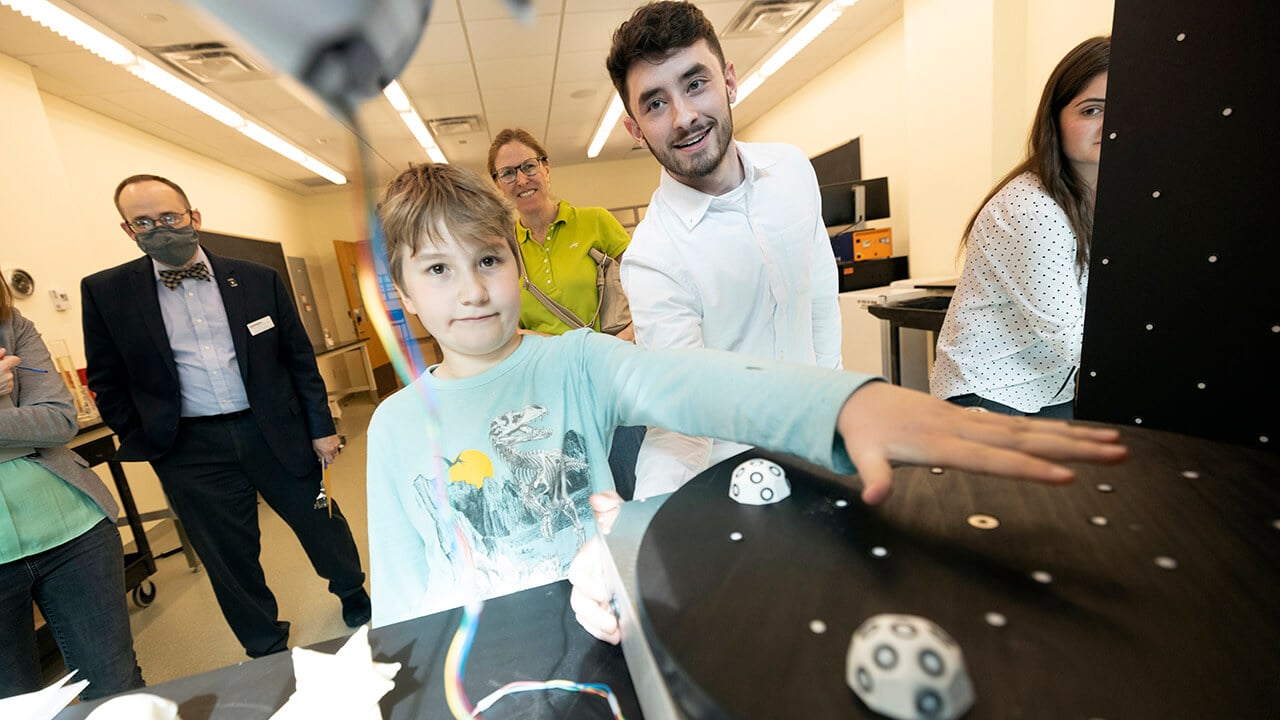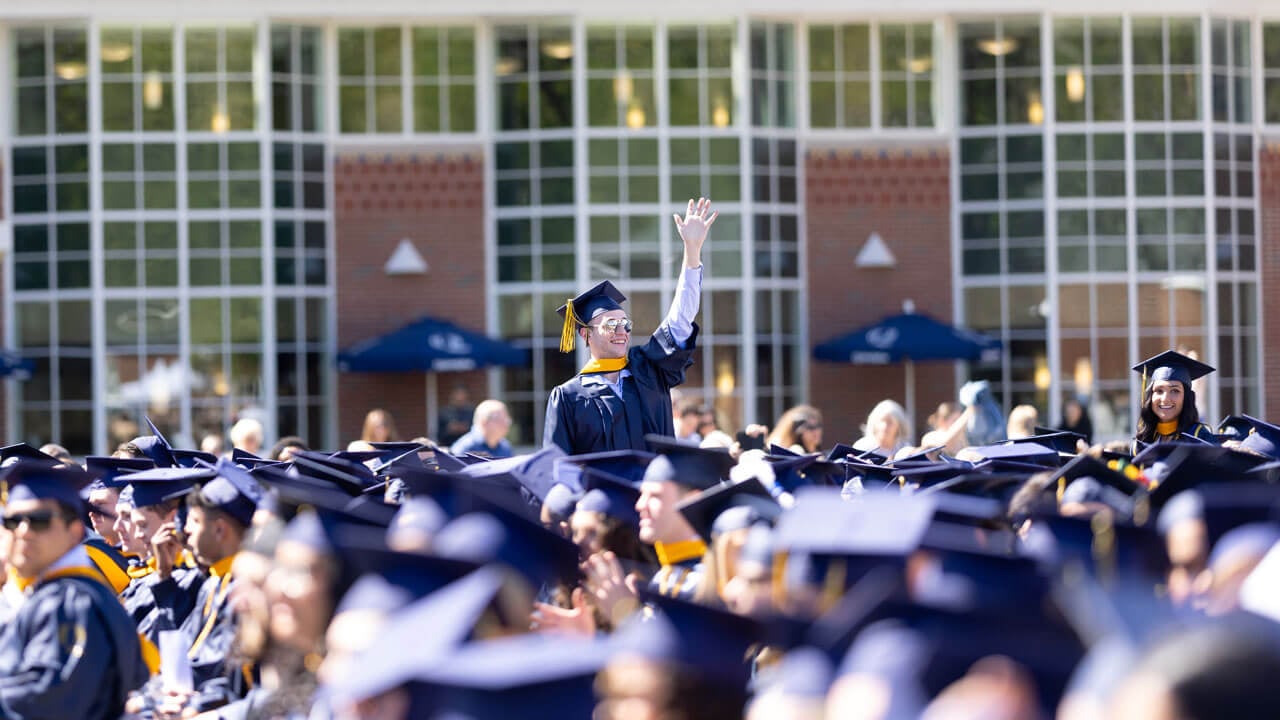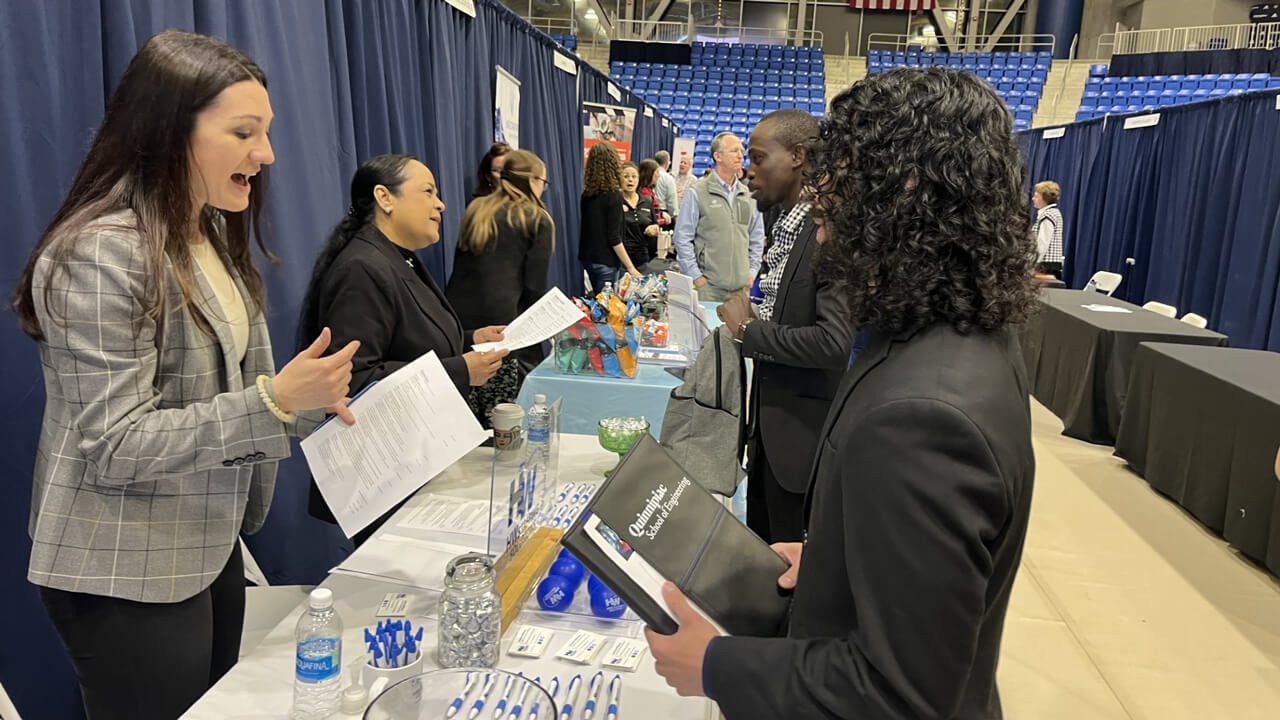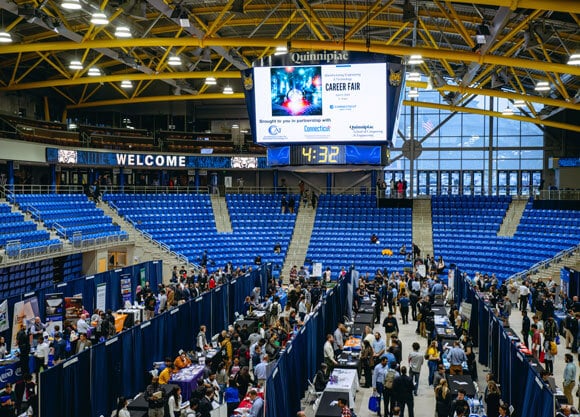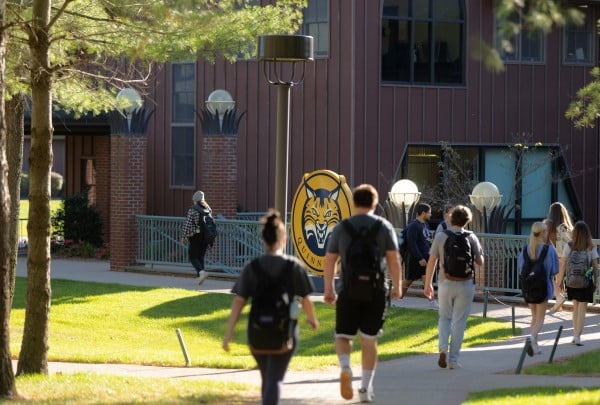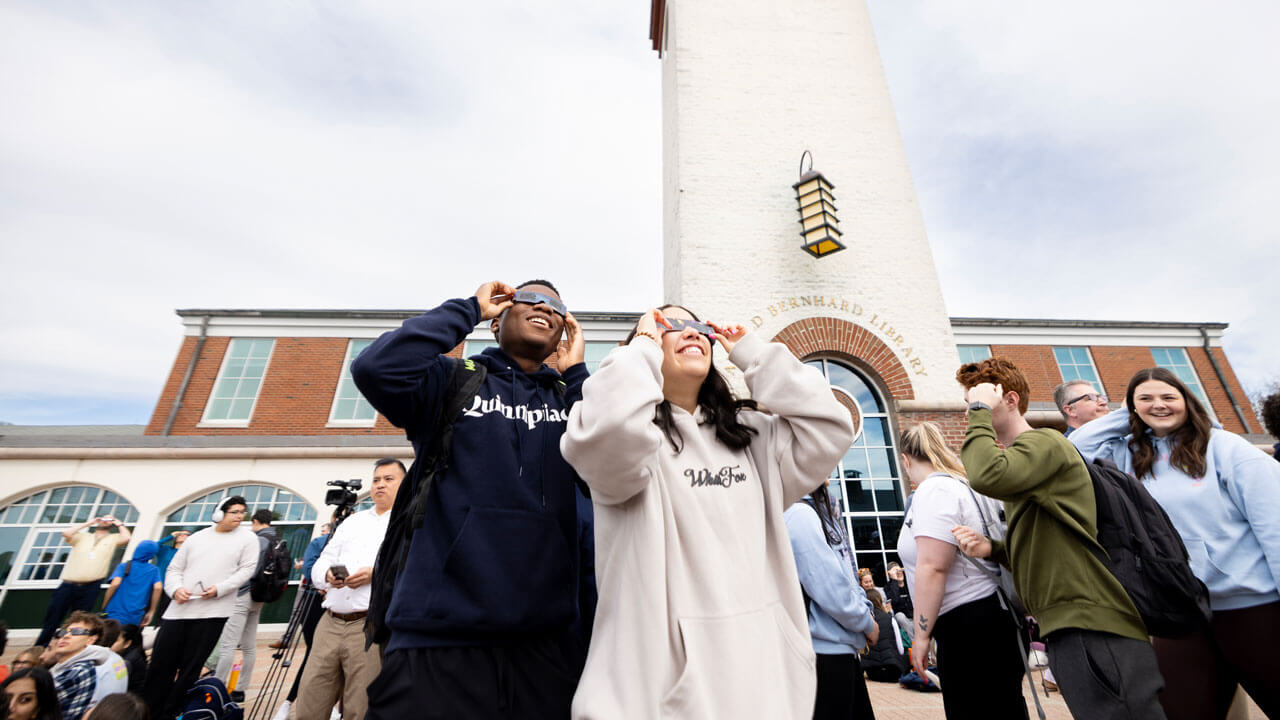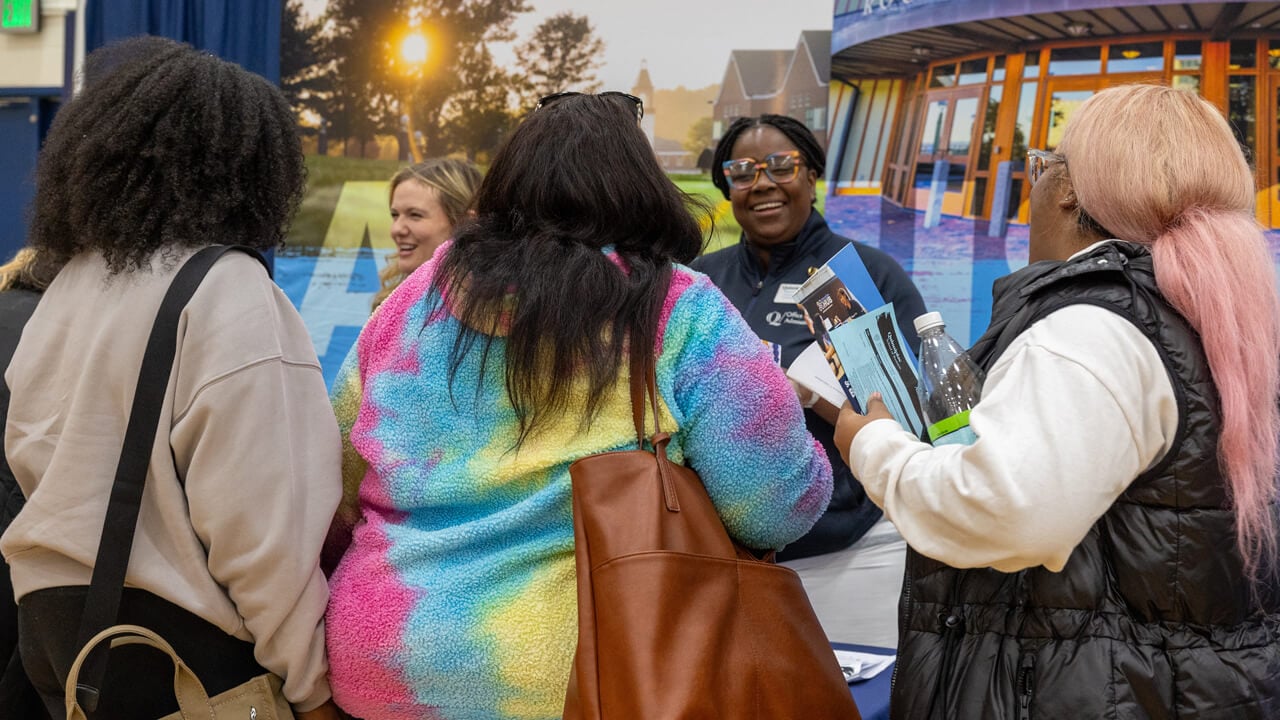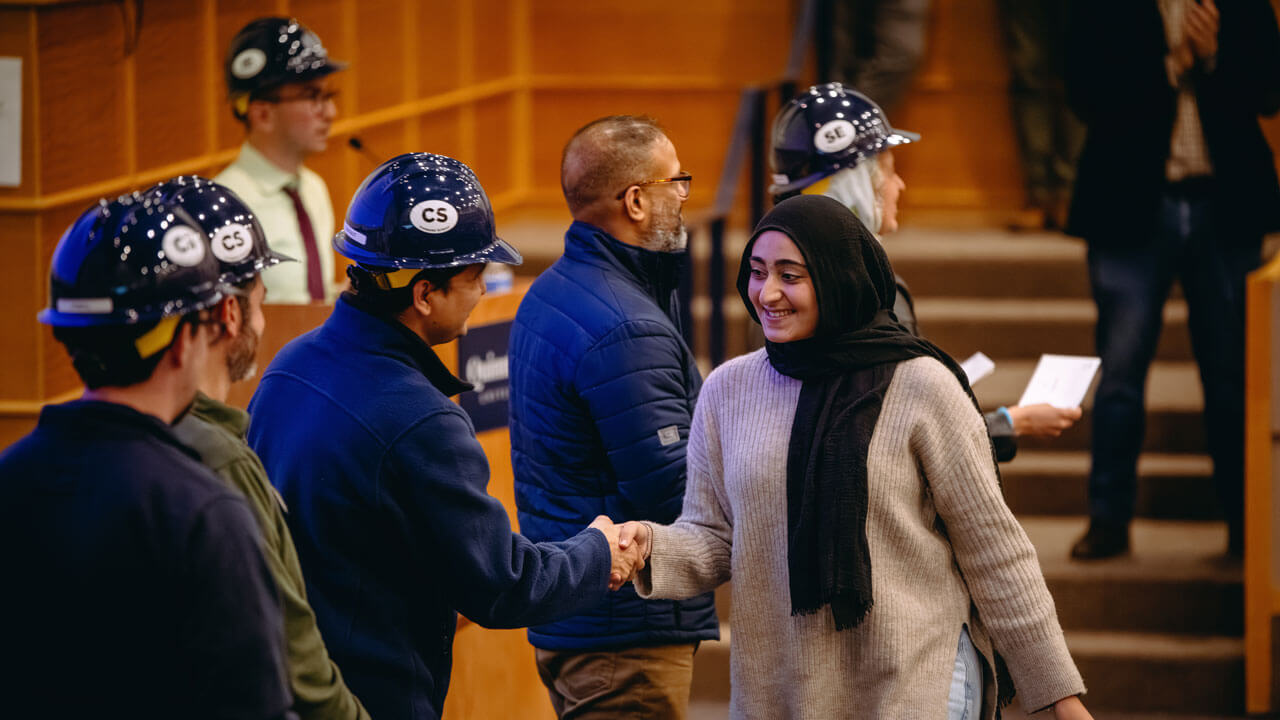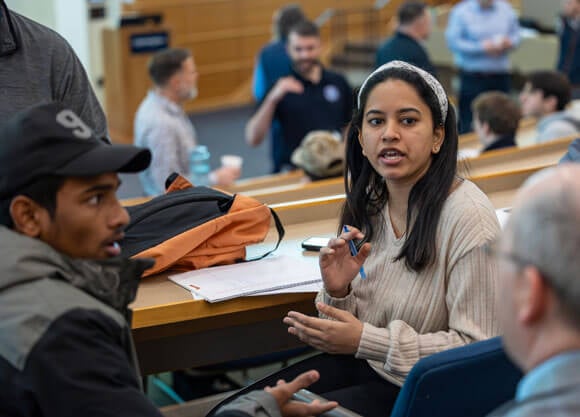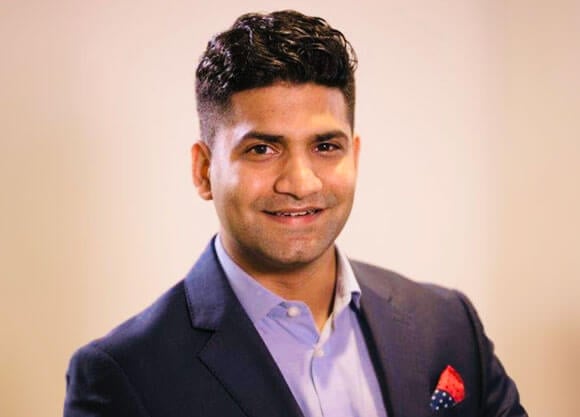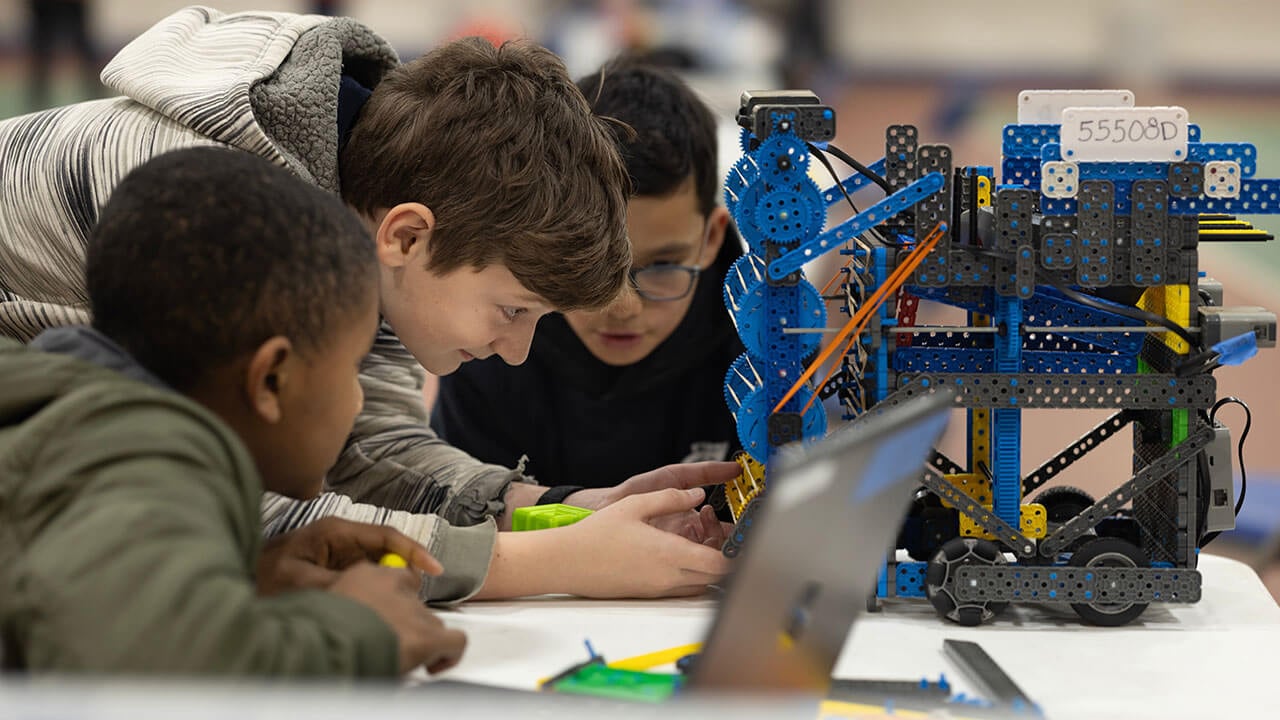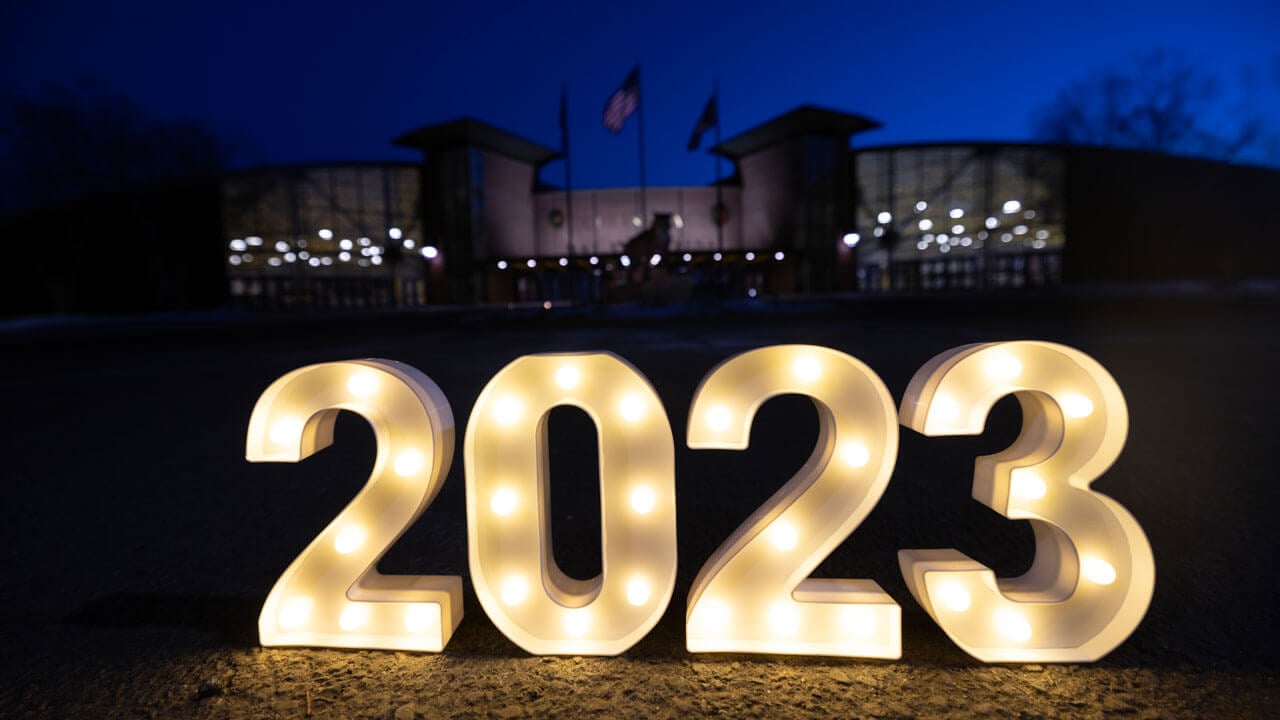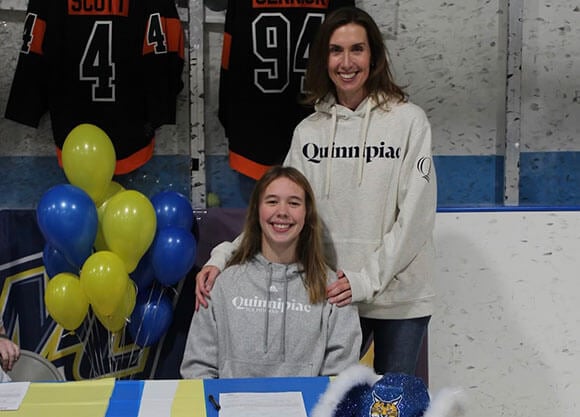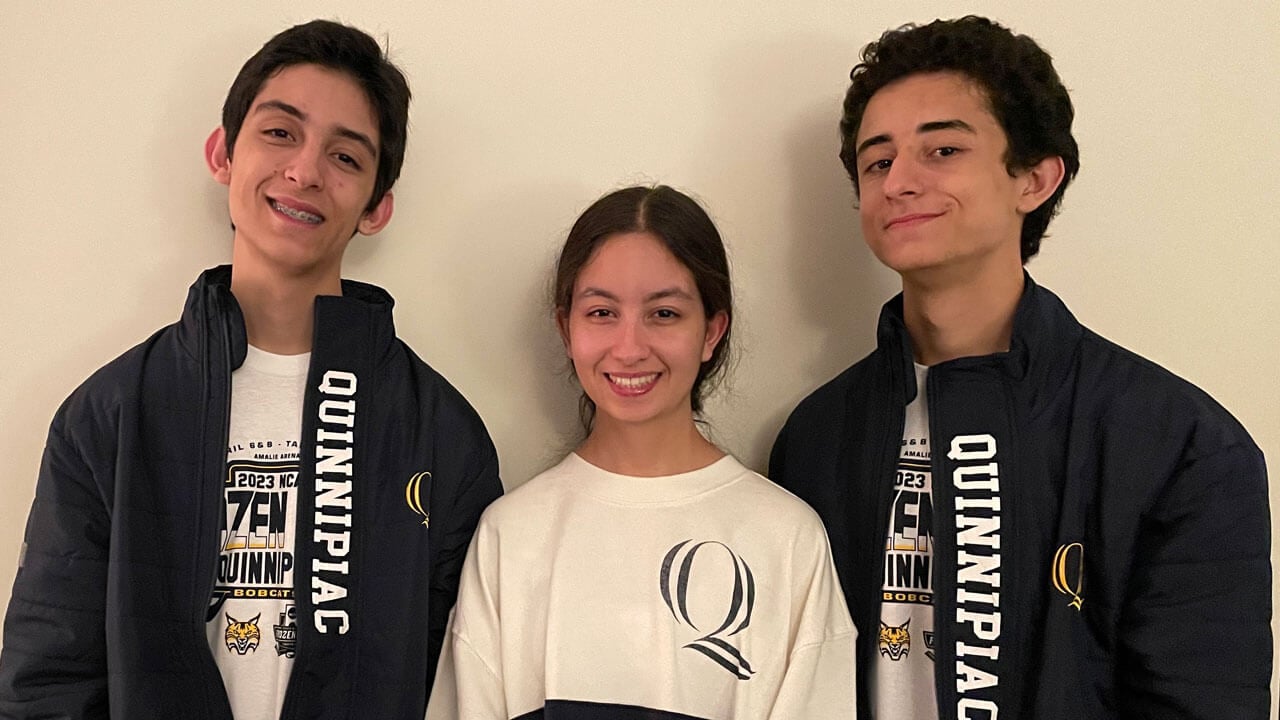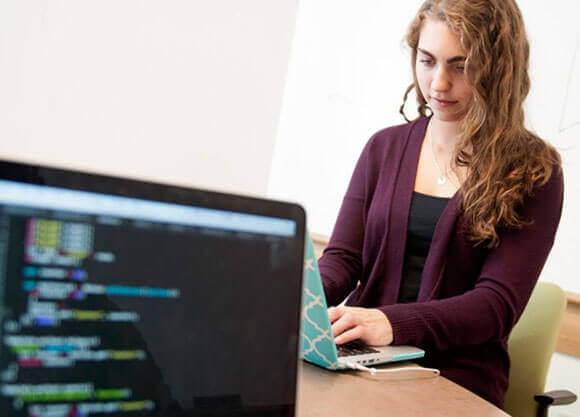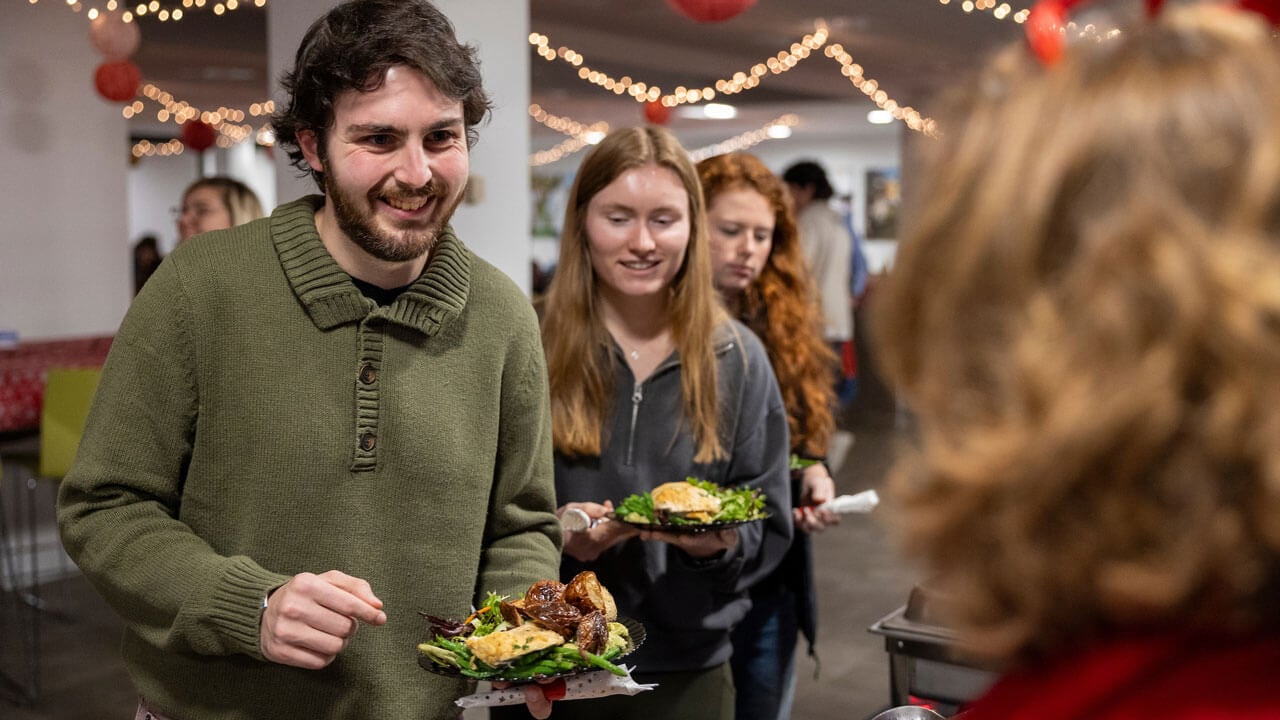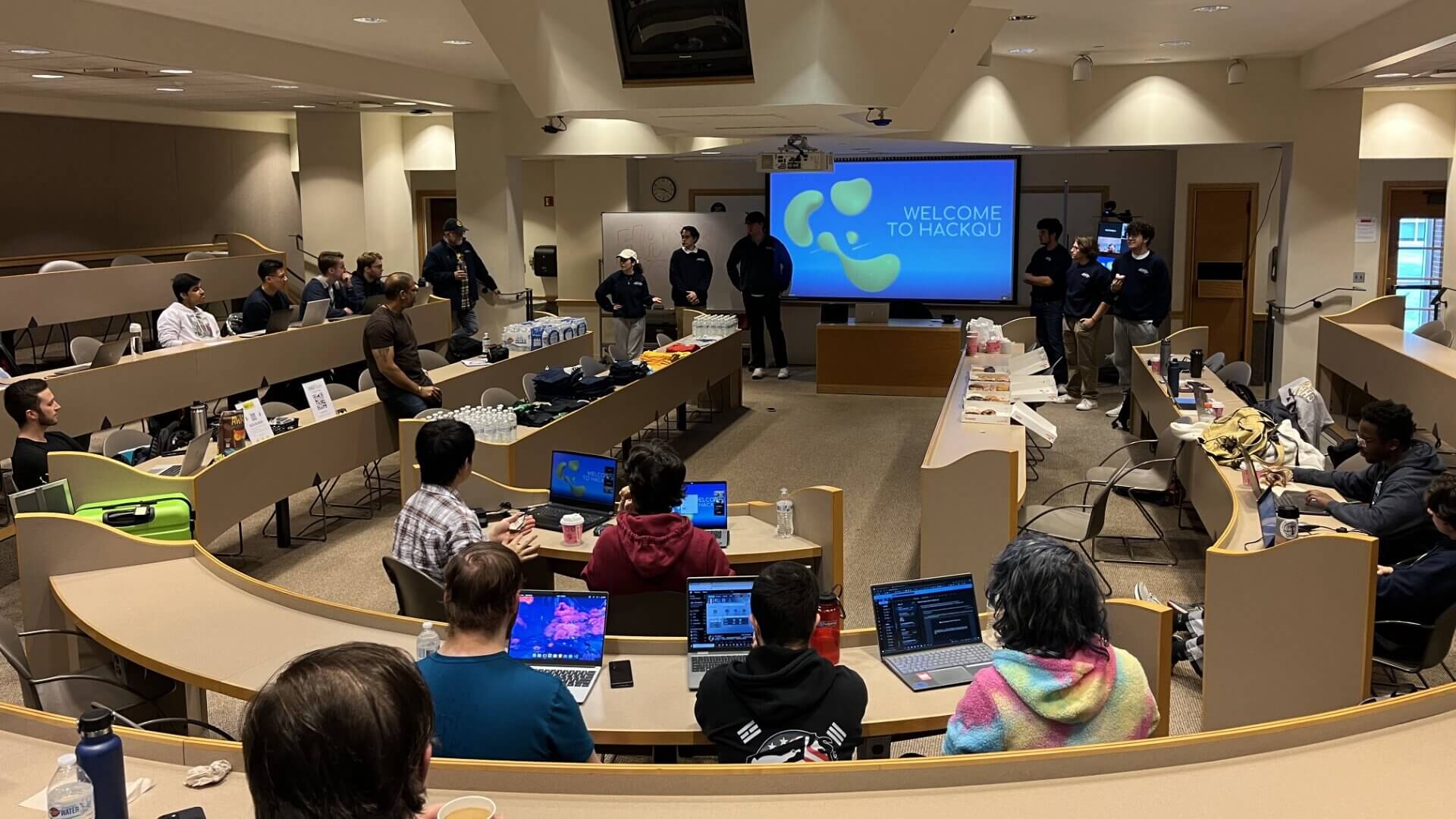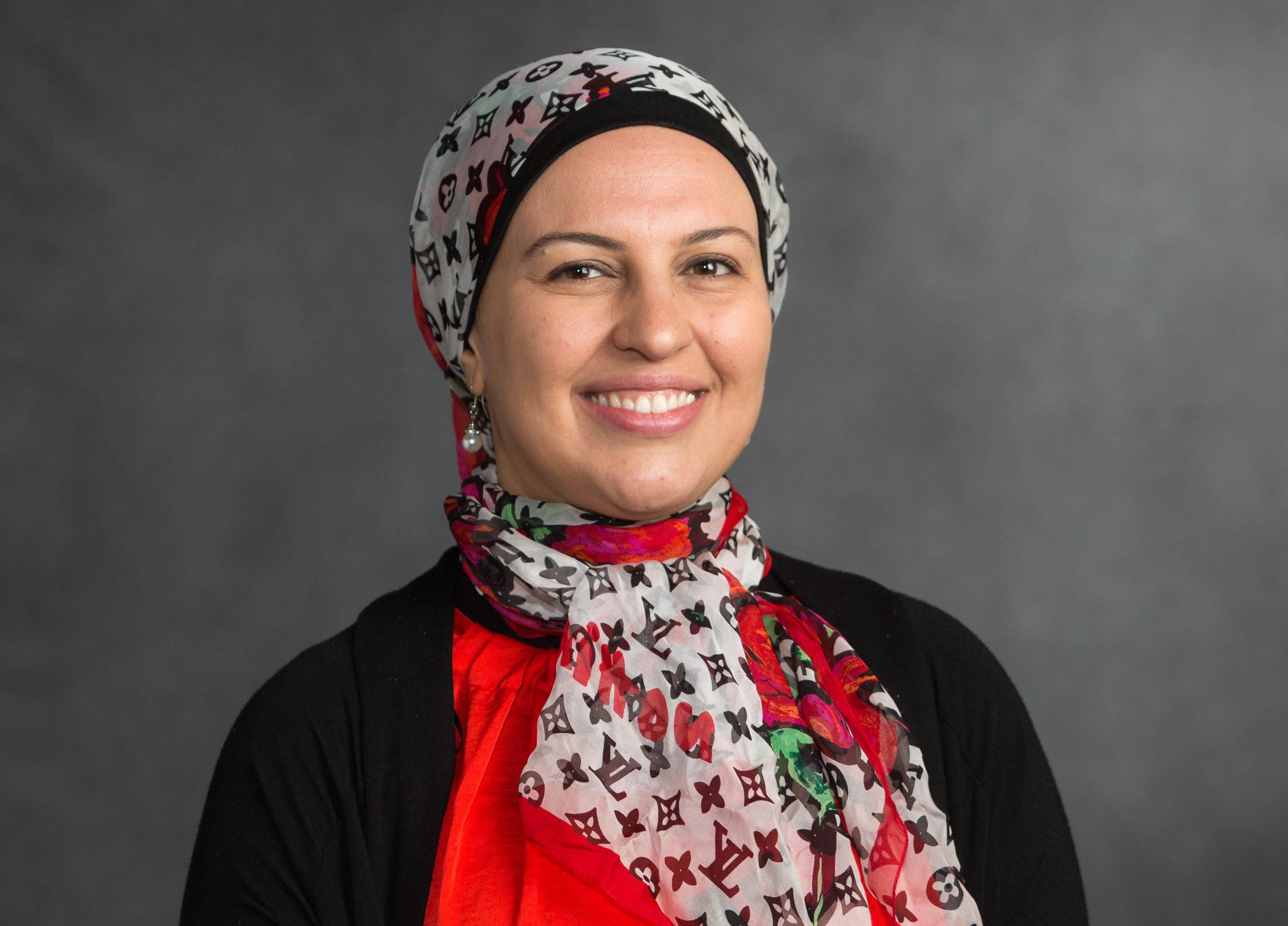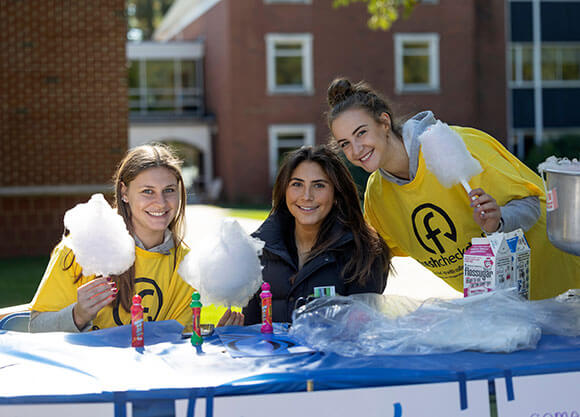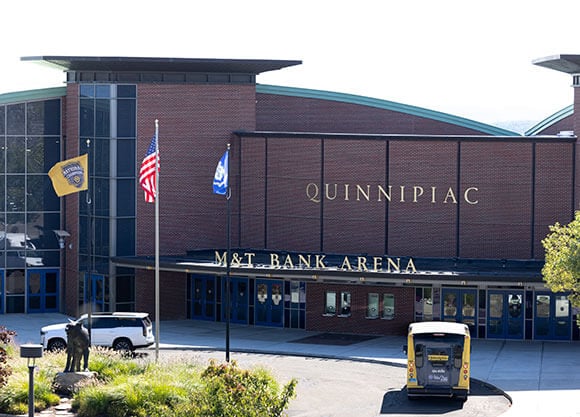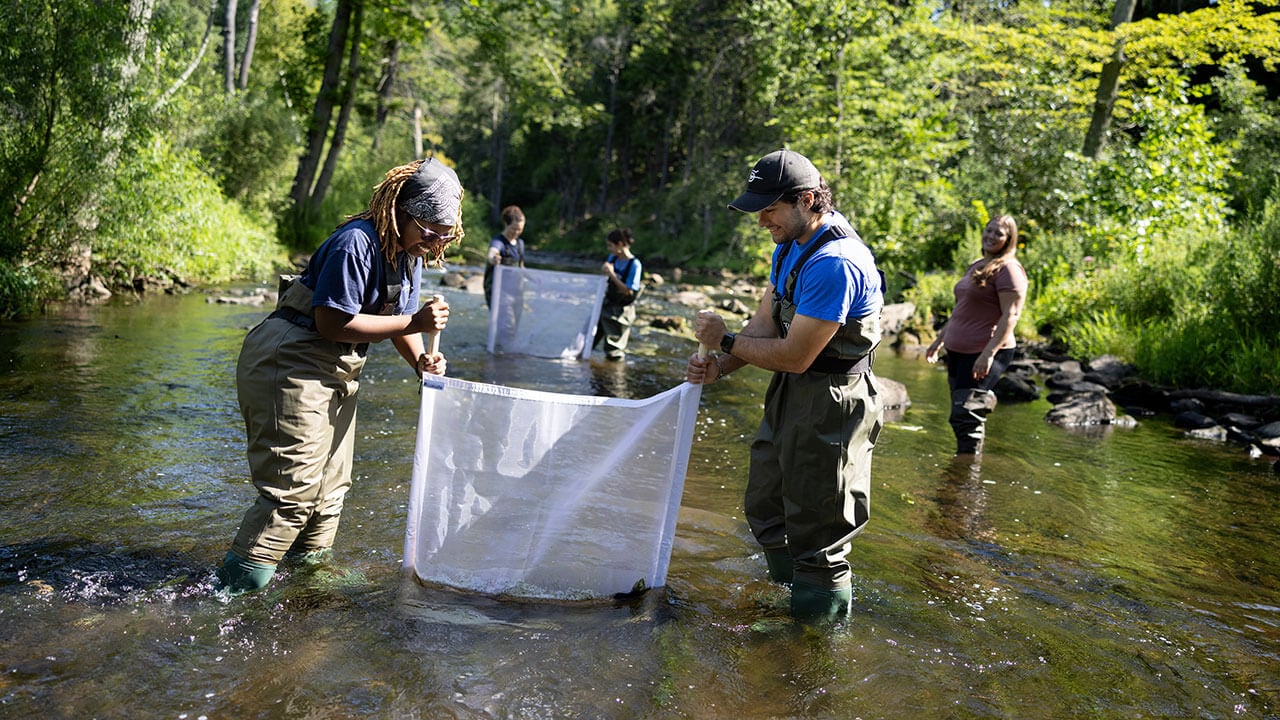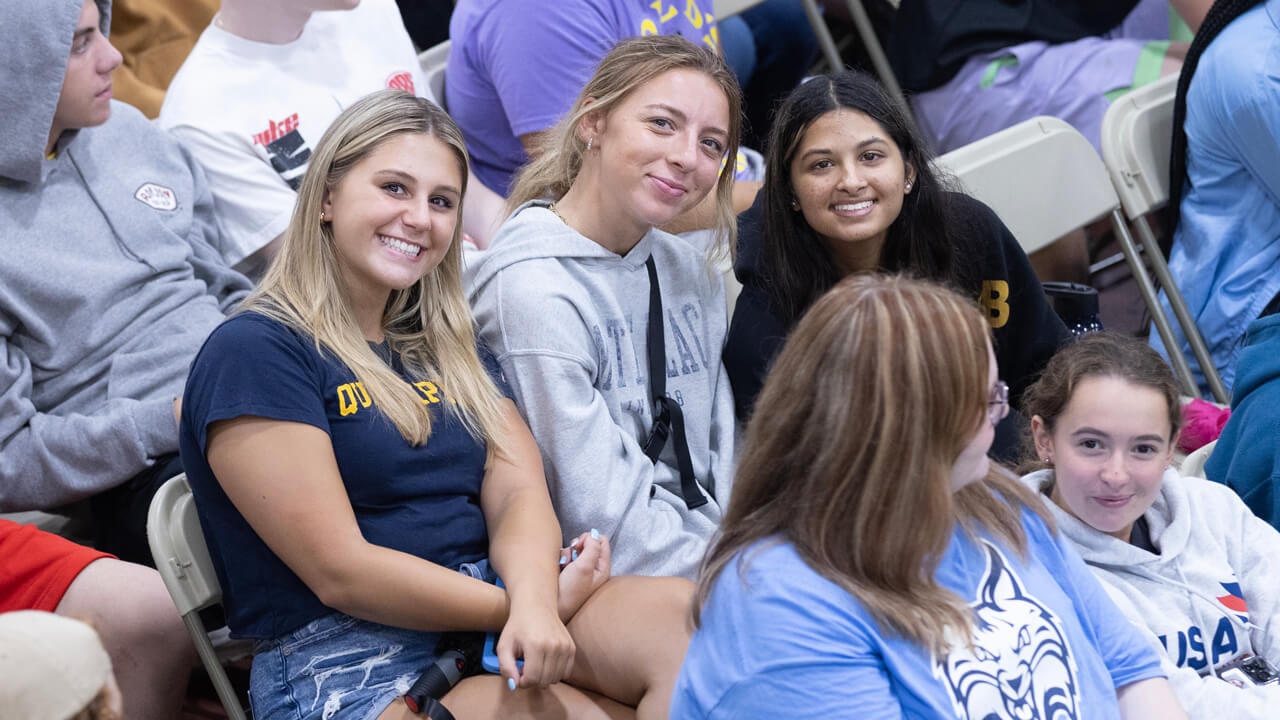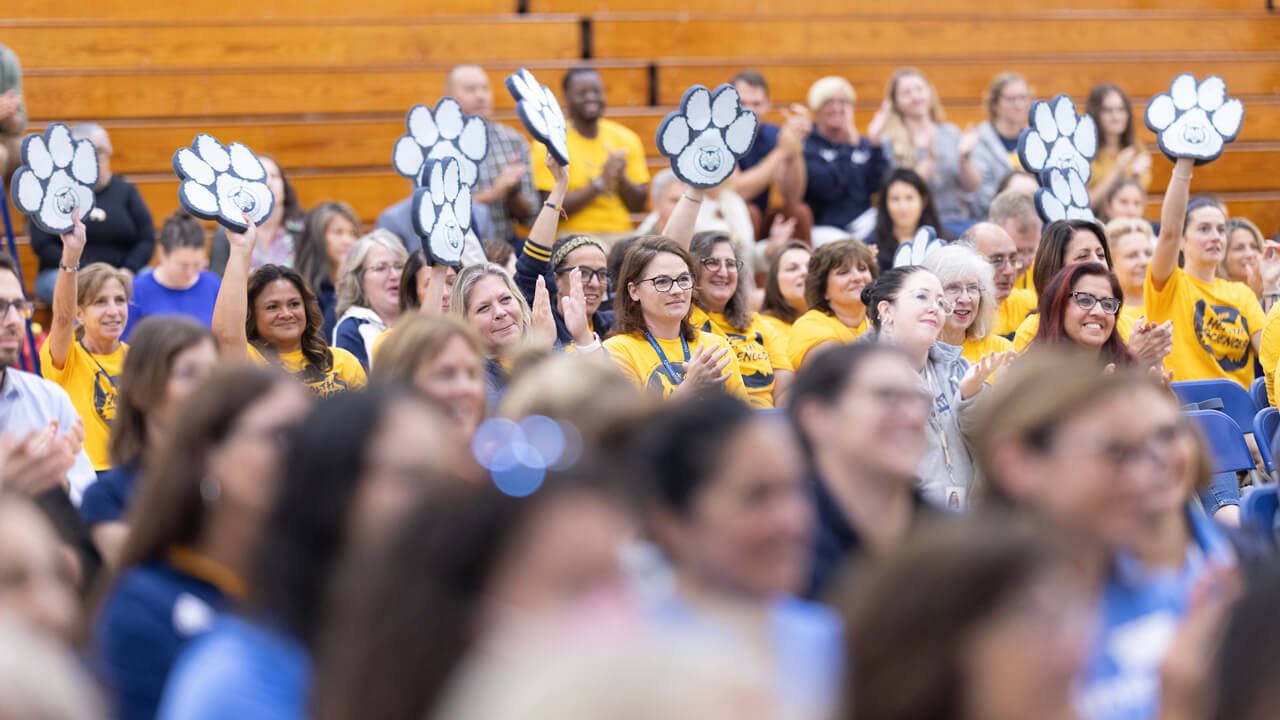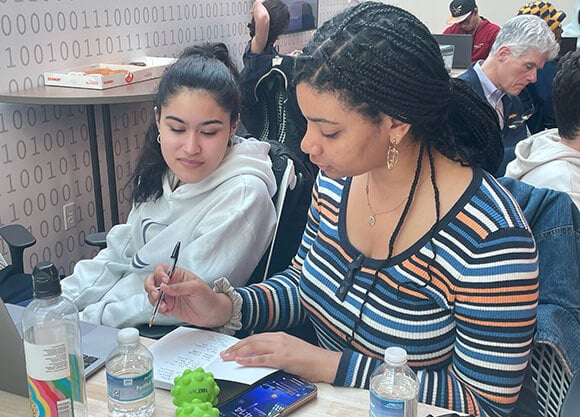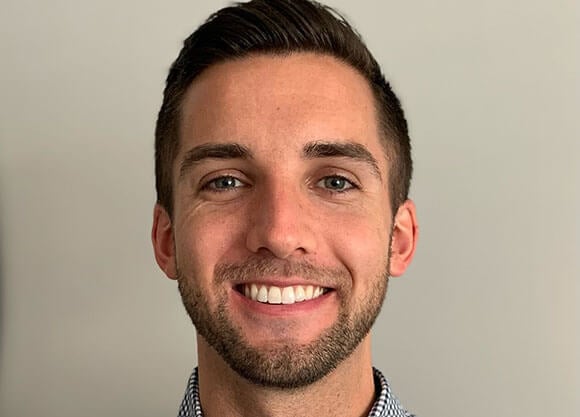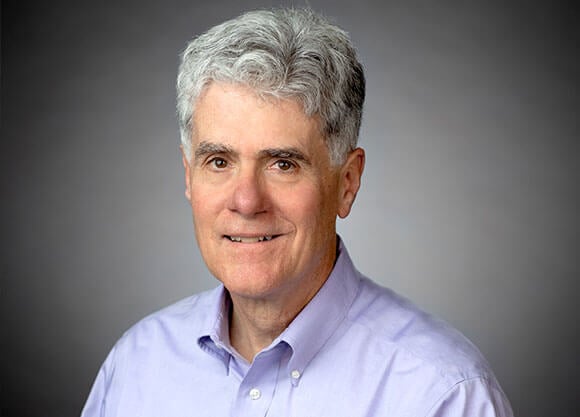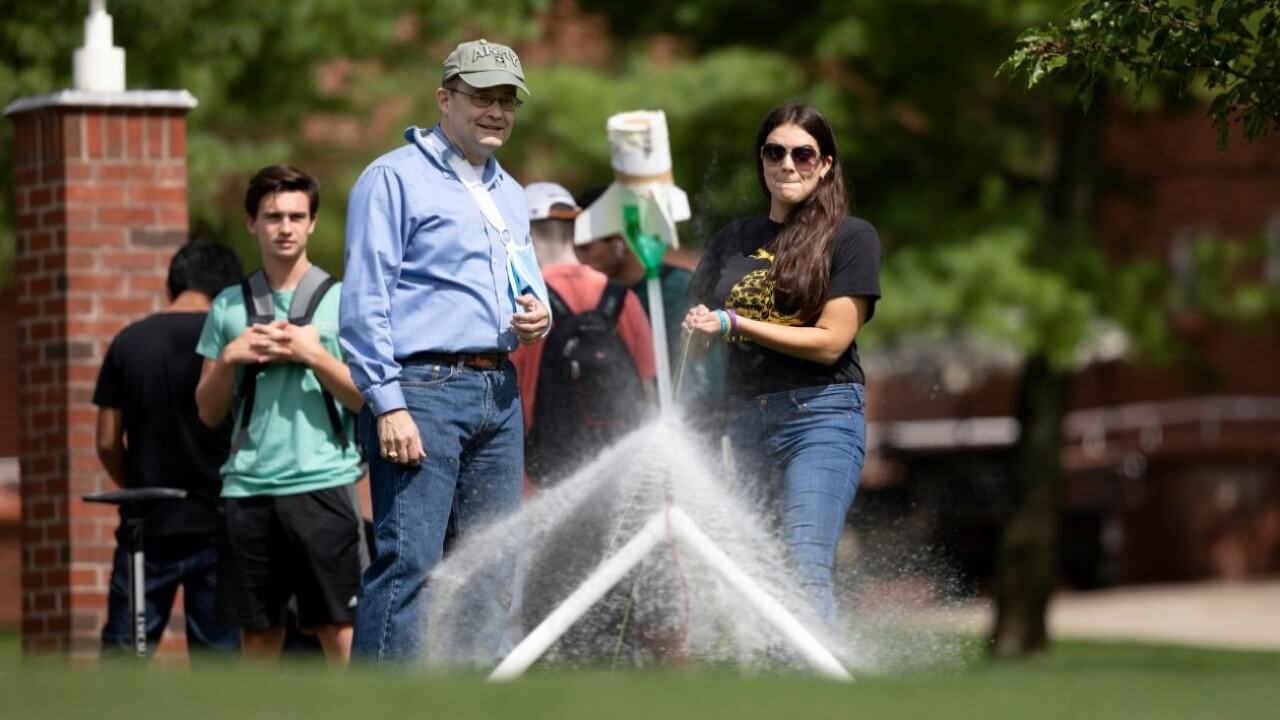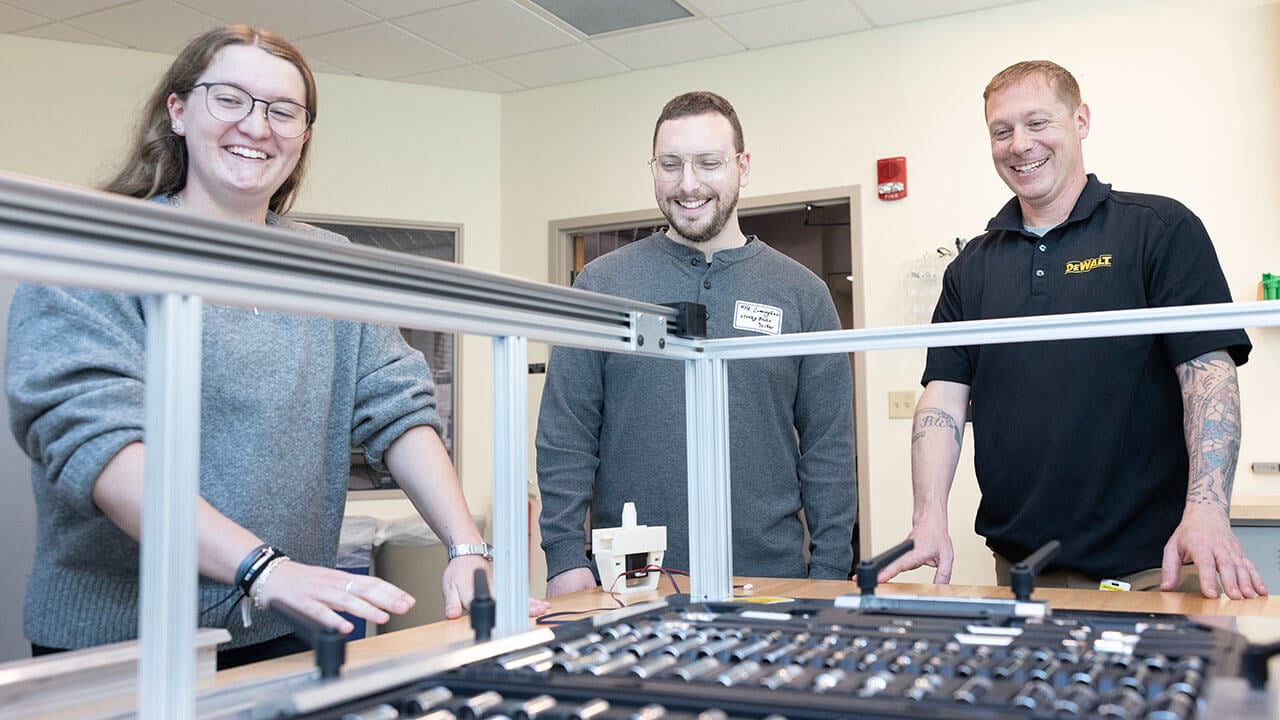
Interim Dean Lynn Byers called it a wonderful opportunity to see the great work that the graduates have put in, not just this year, but over four years.
More than 60 students presented their projects to members of the Quinnipiac community and local employers.
Connecticut’s Chief Manufacturing Officer Paul Lavoie attended and noted that although the state has a strong manufacturing ecosystem in Connecticut, we need to focus on new ways to adapt for future growth."
“These Quinnipiac students are the ones who will affect that change,” he said, adding that there are three things needed to affect this change: knowledge, time and money.
“Quinnipiac will bring the knowledge and help open minds over time, and I can help with the money,” said Lavoie. “Connecticut is No. 4 in the nation for innovation and production. In order to keep that high ranking, we have to keep our students in Connecticut.”
Among the projects featured:
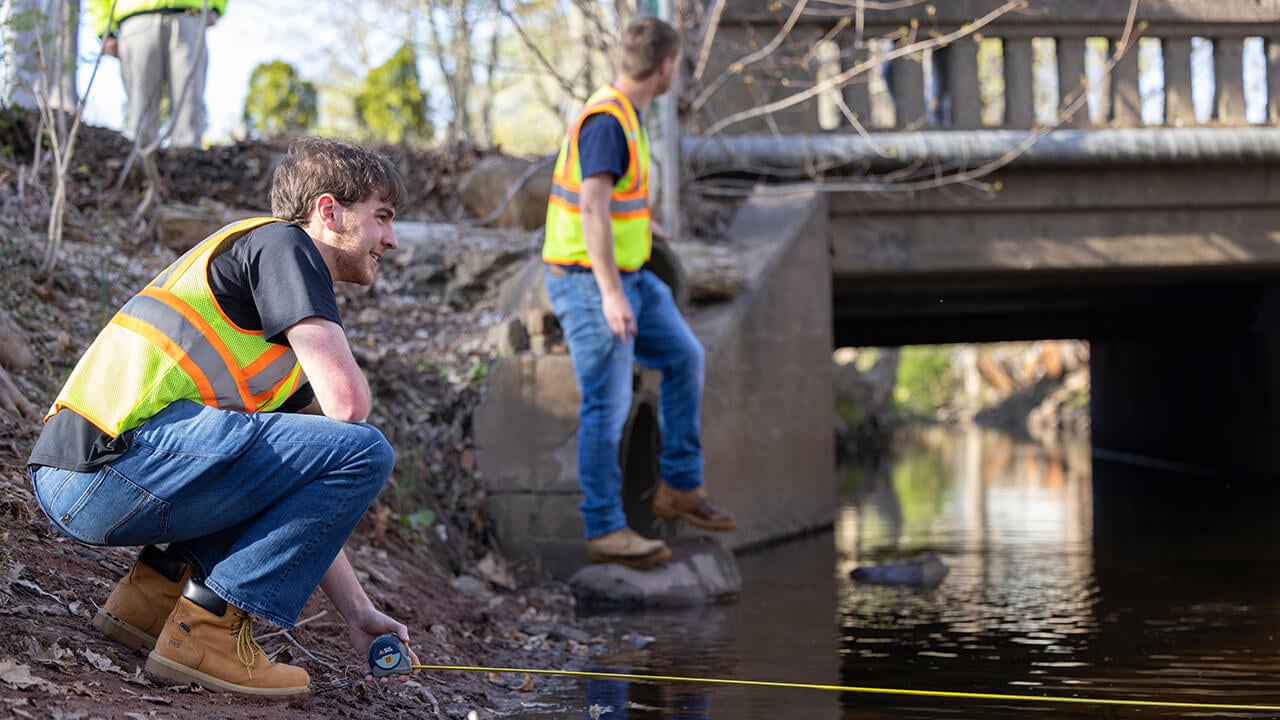
Area of study: Civil Engineering
Project: Woodin Street Bridge
Students: Michael Neumann, Chris Flannery, Luke Desilva, Kyle Somogyi, Stephen Porobija, Colin Stephenson and Eugenio Buccini
A bridge located on Woodin Street in Hamden – heavily used by commuters traveling to and from New Haven – needed replacement due to poor conditions. The seven-person Quinnipiac civil engineering team was charged with making that design for the Town of Hamden.
“One thing that I found useful from this experience is that after I graduate, I am going to be a bridge inspector, so getting to look at some of those bridge inspection reports will be super helpful,” said Michael Neumann.
The project involved developing traffic detour plans, performing a hydraulic study on the bridge, which was badly affected by scour, the wearing away of the foundation. Two structural analyses were performed: one for a box culvert design and one for a box beam design and a survey of the site.
The students learned about surveying during multiple site visits and also planning and distributing tasks in project management style during the semester’s work. They learned how to read professional documents as reference and in design analysis, bridge and road pavement design, how to read traffic design reports.
“The biggest thing that I learned from this was being able to use the proper survey equipment and learn how it’s done,” Christopher Flannery said.
Hamden opted for the box culvert design and work will take place from June 1 to September 30.
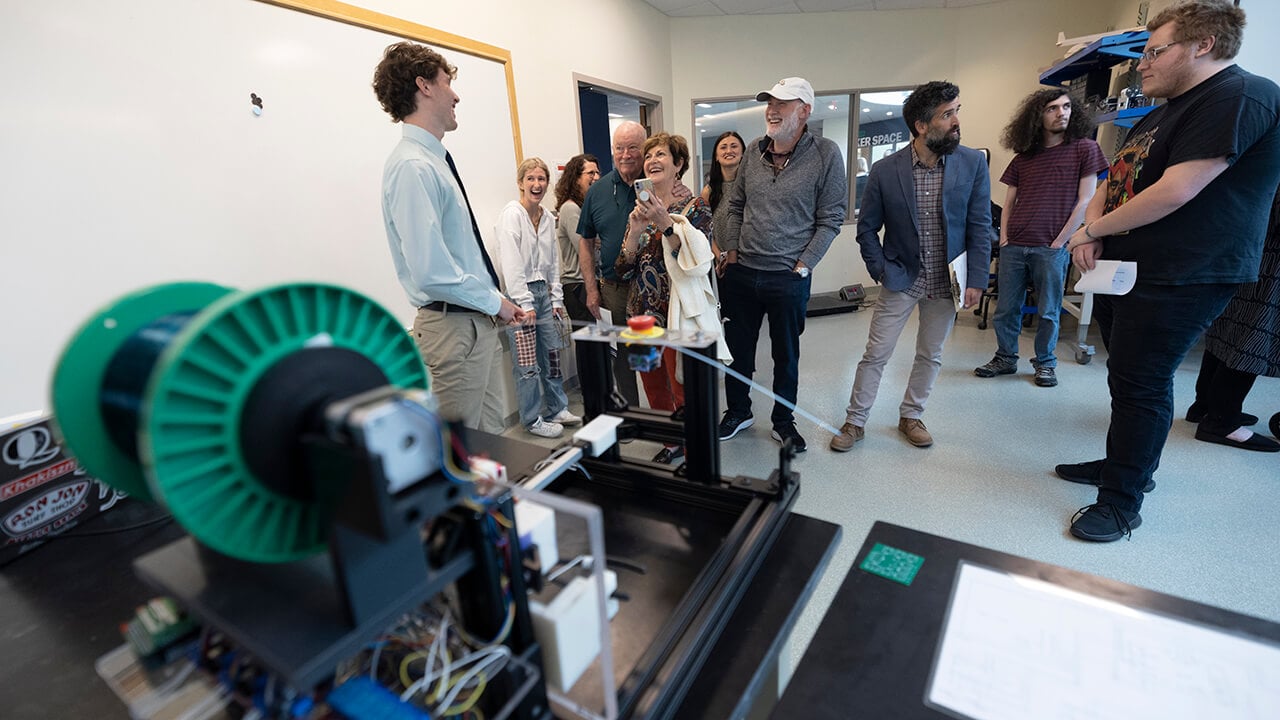
Area of study: Mechanical Engineering
Project: Medtronic: Knot Tying Robot for Suture Testing
Students: Harrison Dewhurst, Gina Greco, Hope Kavulich, and Emily Strauss
Mechanical engineering students were charged with creating a prototype of a robot that can tie simple knots using Arduino microcontrollers along with electromechanical components for medical device developer Medtronic. The robot will tie a simple knot and cut the suture, improving the consistency of the knots, the efficiency of the process and ergonomics for the engineers prepping the samples.
“The tying is currently done by employees, which can be very time consuming and the project goal was to make tying these knots fully autonomous,” said Gina Greco
The project had to stay within a budget of $5,000 with a prototype available at the end of the 2022 semester. The students developed a system of tubes and plates that resulted in the suture being done in an overhand knot. The device needed to hold multiple sizes of sutures, have a tightening mechanism, a simple user interface, have a cutting mechanism and be suitable for extensive use.
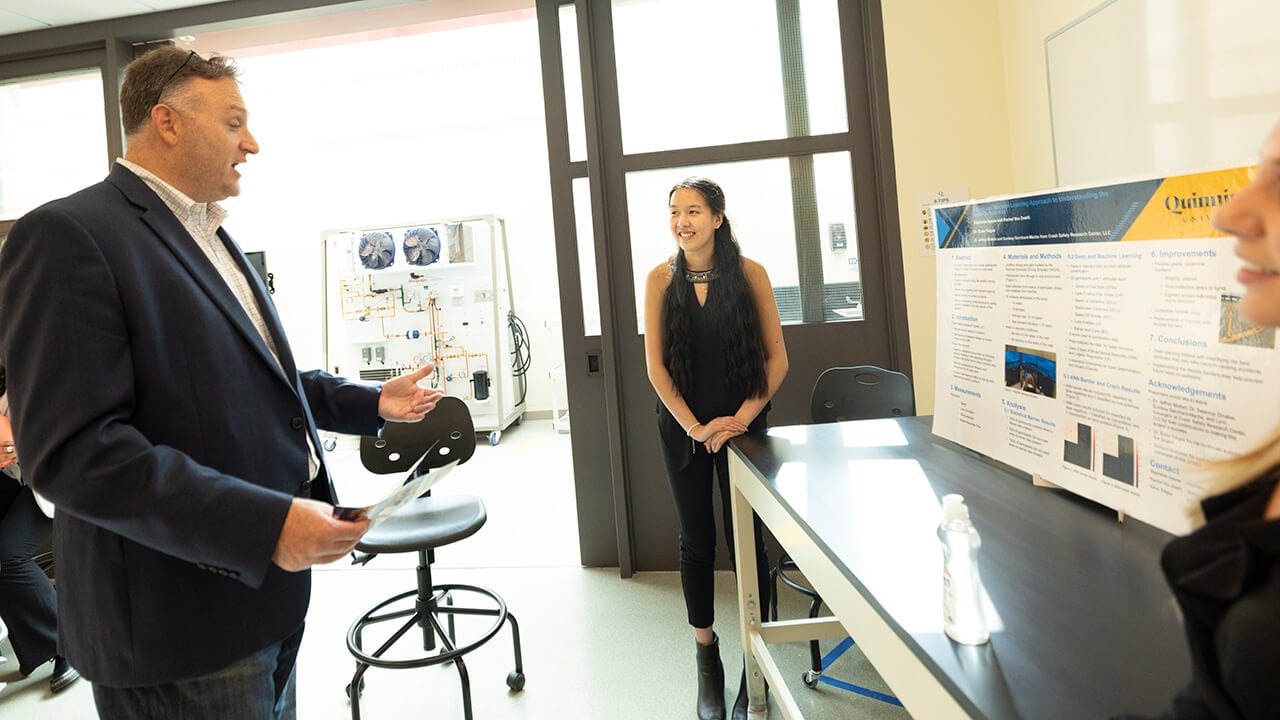
Area of study:Industrial Engineering
Project: Crash Safety Research Center: A Deep Learning and Machine Learning Approach to Understanding Drivers’ Response During the Head-On Scenario
Students: Stephanie Appow and Rachel Von Zwehl
Stephanie Appow and Rachel Von Zwehl looked at the head-on car crash scenario, which tends to be among the most severe accidents that result in at least an injury, and in worst-case scenarios, a fatality.
“The purpose of this study is to improve the understanding of the head-on scenario in a simulated driving environment,” Von Zwehl said. The collected data was provided to crash reconstructionists to implement proactive safety strategies effectively.
They used a miniSim driving simulator to create a driving experience for participants and then analyze and collect crash data using real-time measures that the software provides.
“The client focuses on motor vehicle response to traffic for various presented and published studies and offers educational courses about human factors that affect drivers’ responses,” said Von Zwehl
Using a deep learning and machine learning approach, a way to find underlying patterns embedded in data, they looked at the different reactions drivers had with the presence of a barrier or without a barrier on the shoulder of the road.
“Based on our results, we wanted to have recommended safety strategies and one thing that we thought would be effective is lane-keeping sensors in cars. Centerline rumble strips are also effective, as are centerline medians,” Stephanie Appow said.
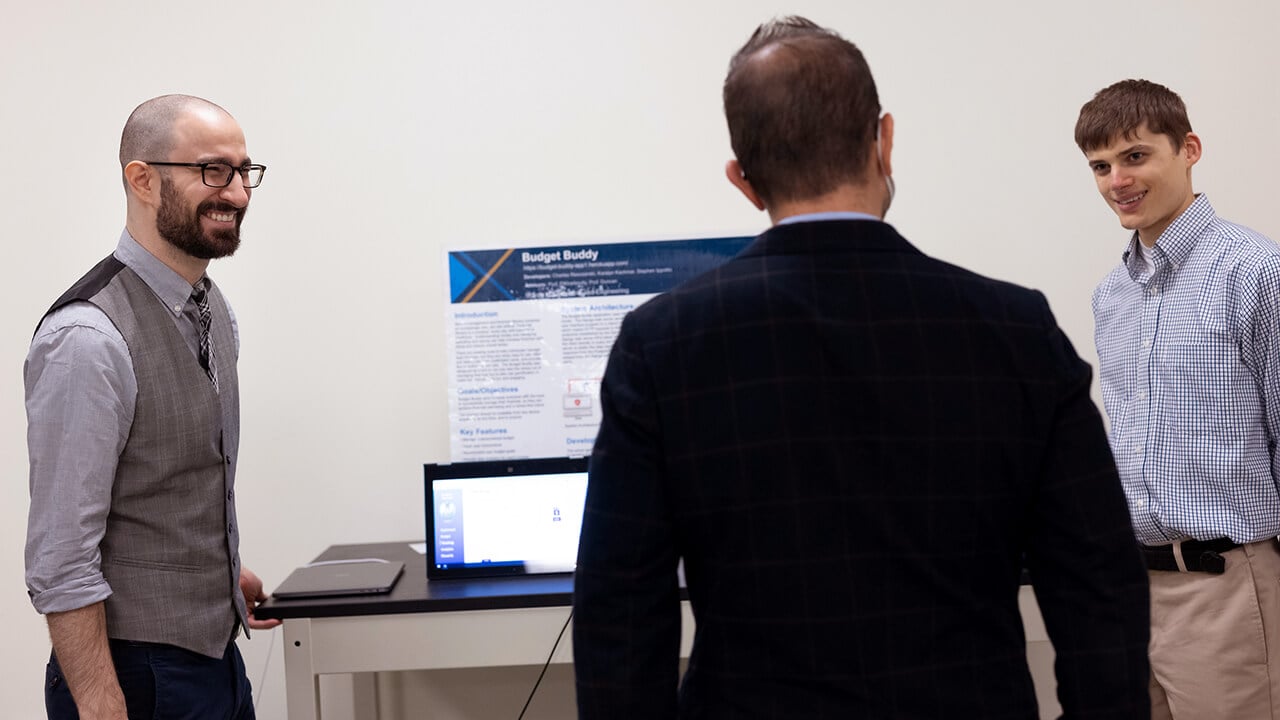
Area of study: Computer Science (BS)
Project: Budget Buddy
Students: Charles Rescanski, Karalyn Kachmar and Stephen Ippolito
This team of three developed a gamified budgeting web application that is hosted on Heroku.
“It’s gamified in the way that users interpret their use and different aspects of the app as a game through the use of rewards, competitions, challenges and the ability to customize an avatar,” said Karalyn Kachmar
Its main focus, which is the budgeting side, allows users to manage a budget and track transactions, both expenses and income. The application uses advanced mathematical models to recommend budget goals and forecast future spending behavior. It also alerts users when they’re expected to overspend for the month.
Unlike competing budgeting platforms, this application is gamified to enhance the user’s experience: users can make friends, engage in competitions, complete challenges and customize a personal avatar. Lastly, as a web application, the tool is always available around the clock on a plethora of mobile and desktop platforms.
“The user provides their income information and characteristics,” Stephen Ippolito explained. “The budget is created for them and they are provided recommendations on how much they’ll budget for needs, wants and savings.”
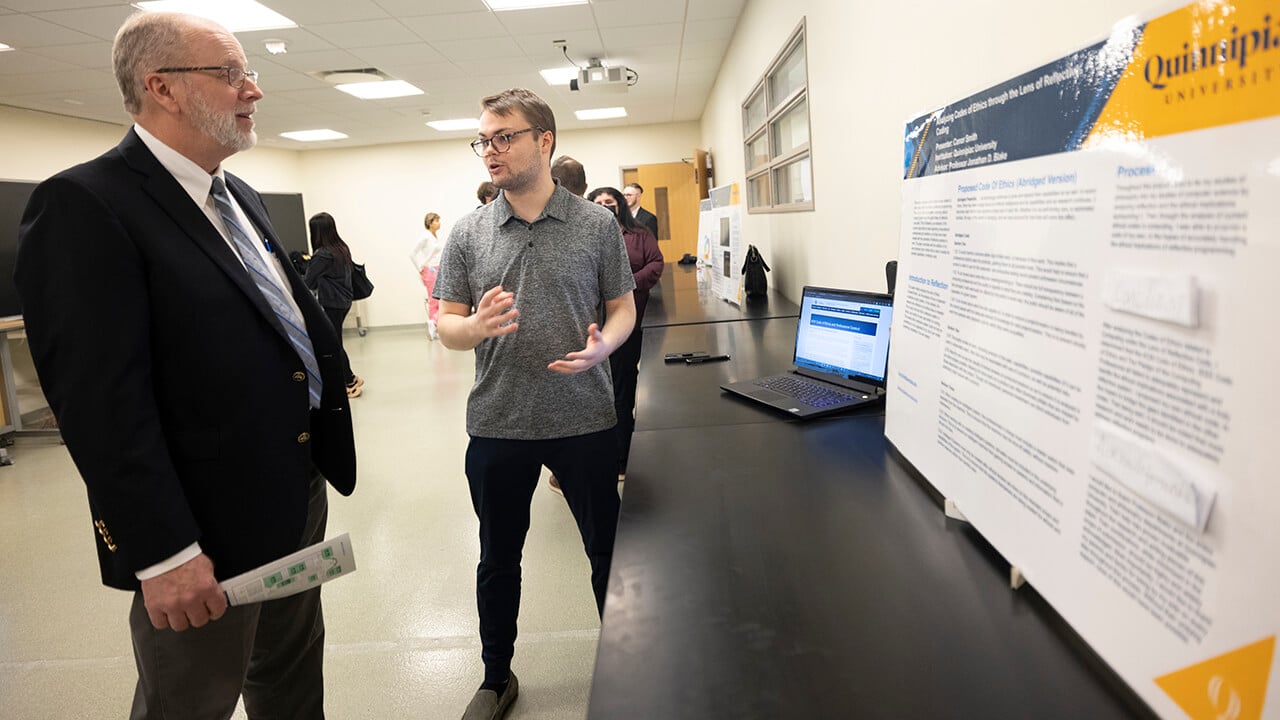
Area of study: Computer Science (BS)
Project: Analyzing Codes of Ethics Through the Lens of Reflective Coding
Student: Connor Smith
Conor Smith addresses the history and importance of codes of ethics and then dives into the complexities and capabilities of reflective coding. The paper concludes with a comparison between the implications of reflective coding and the rules and regulations outlined in two or three of the major computing codes of ethics (ACM Code of Ethics, Code of Ethics for the Computing Professional, IEEE Code of Ethics).
“Reflection is the human process of tapping into past experiences or memories in order to modify new actions in current or future situations. The important part of reflection is that it pays a big role in future decisions,” said Smith.
The same idea can be applied to computers in that they analyze past actions, database knowledge, internet sources, or even code that is on the internet in order to modify its own code to satisfy its task description.
“The problem is that a truly reflective system may be able to modify its own code and do tasks outside of its given scope and there are some ethical implications to that,” he said.
In his presentation, he talked about the codes of ethics.
“They’re all very good to know and when you’re working in computation, just to keep yourself on the safe side of things,” Smith said.
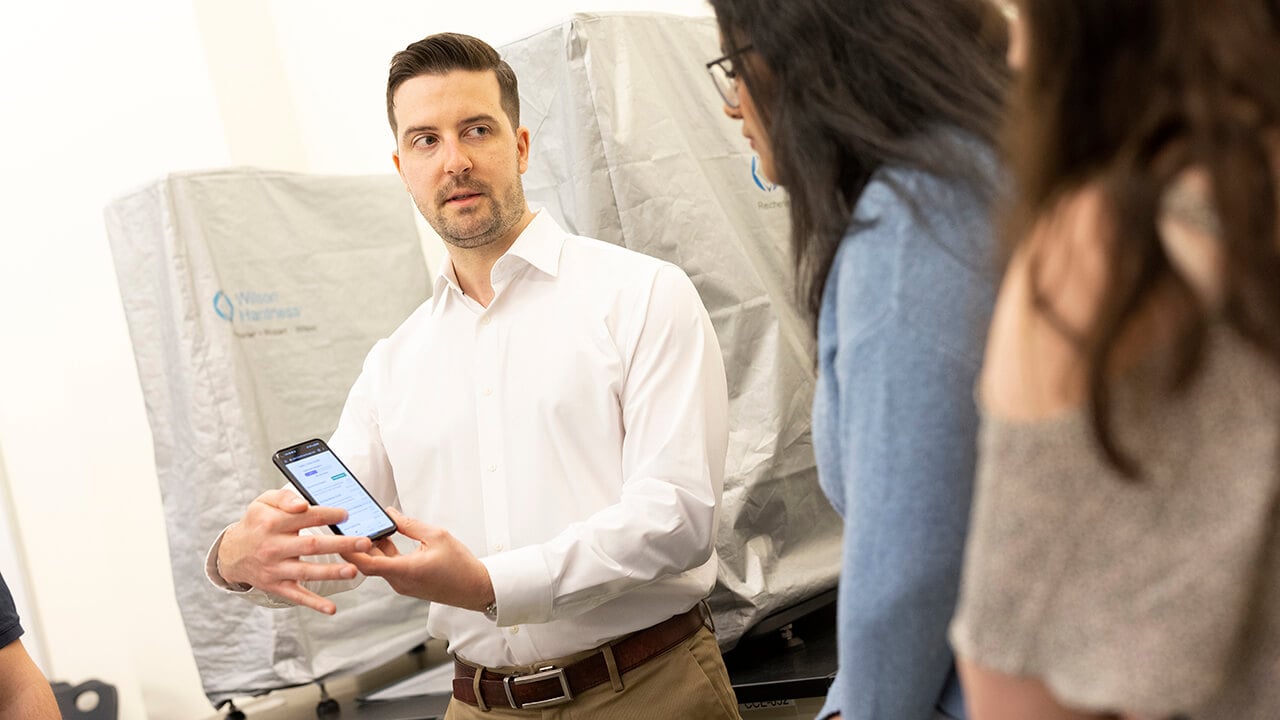
Area of study: Software Engineering
Project: Service Hours Tracker
Students: Thomas Gadacy and Christian Mele
Thomas Gadacy and Christian Mele set out to develop a web-based application that allows the School of Nursing to track the number of hours each student has dedicated to service activities. The app allows faculty to create a list of eligible service-related events, students to log their service hours and event attendance, and both students and faculty to track those service hours. This application will support the Service Distinction award that the School of Nursing is implementing which students will receive upon graduating.
In order for students to receive this award, a student must have served a set number of hours at service-related events.
“The goal of the project is to provide a one-stop-shop for students to view their progress and find upcoming events to attend,” Gadacy said. “It gives faculty a way to view progress of their students as well as post events for students to attend, while minimizing the workload on faculty.”
The application was designed in a way that could be easily expandable to other Quinnipiac schools.
In this Article
Stay in the Loop
Quinnipiac Today is your source for what's happening throughout #BobcatNation. Sign up for our weekly email newsletter to be among the first to know about news, events and members of our Bobcat family who are making a positive difference in our world.
Sign Up Now